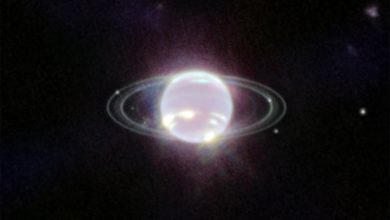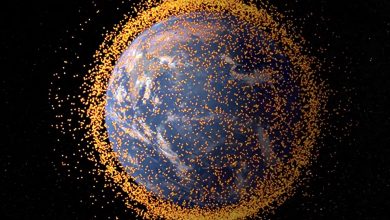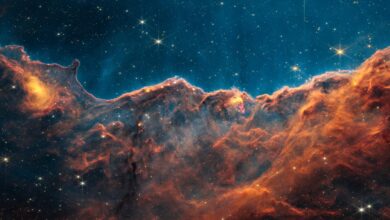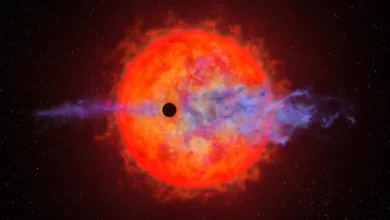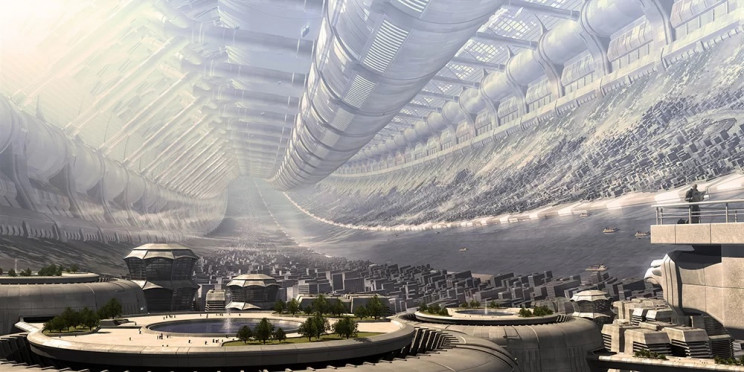
Lead Image: A scene clip from the video game Mass Effect. The Citadel is a space station which is a type of O’Neill cylinder and it houses around 13 million souls.
Ask anyone in the public or commercial sector and they will likely tell you that we are living in a “second Space Age,” or “SpaceAge 2.0.” Not only is our presence in space increasing dramatically, but so is the accessibility of space. Between the declining costs of launching payloads and the growth of space agencies worldwide, more people can participate in the sector than ever before.
In the coming decades, things are going to become even busier. We have plans to return to the Moon (to stay), explore Mars, commercialize Low Earth Orbit (LEO), create habitats in space, and develop solutions for living sustainably on other planets.
This raises several challenges, not the least of which is ensuring that the younger generations – many of whom will become the next generation of astronauts, space lawyers, space architects, engineers, and entrepreneurs – have the tools they need to look ahead and dream big. This is the vision that STEAMSPACE was founded on.
Headquartered in Austin, Texas, this worldwide organization of volunteers is dedicated to promoting Science, Technology, Engineering, Art, and Math (STEAM) education and project-based learning. As they explain in their mission statement, the STEAMSPACE Academy was launched with the following purpose in mind:
“To offer a diverse and explorative education in the world of space and space colonization to all young minds, surpassing the boundaries of race, economics, gender and identity, ideology, disability, and learning differences. We do this to support the creation and development of prosperous and free human communities and economies beyond the Earth.”
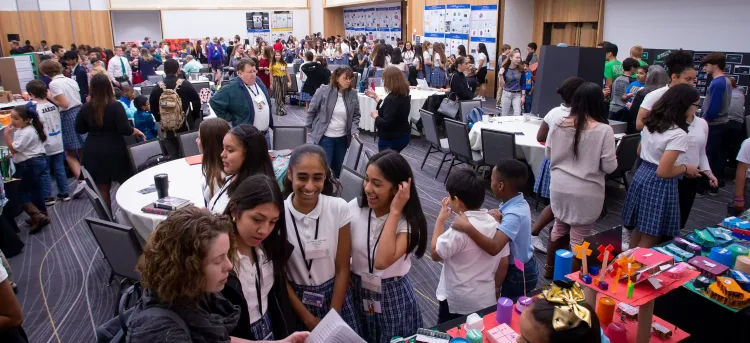
Since 2015, they have hosted the Cities in Space education outreach program. At this flagship event, students come together to collaborate, explore and learn about space science. Students can build virtual models of space habitats for these competitions using Kerbal Space, Minecraft, Sketch, or other open platforms. They can also use 3D printers to create physical models of habitat designs.
At the heart of these competitions and other STEAMSPACE programs is a progressive philosophy that emphasizes equality, diversity, accessibility, and cooperation. The teams are encouraged to choose a specific aspect of space to focus on – space law, engineering, agriculture, architecture, mining, medicine, etc. – and collaborate with other teams to see how it all fits together and how we need each other to thrive.
STEAMSPACE has also consistently hosted 500 participants on-site at their headquarters in Austin. Since the inception of Cities in Space, STEAMSPACE has seen over 60 percent female representation and over 65 percent minority representation in their teams.
In the Fall of 2021, as a response to the pandemic, STEAMSPACE launched the STEAMSPACE Academy for teachers and students globally. The Academy, a parallel program of competitions and opportunities to better prepare schools for Cities in Space, hosts multiple seven-week Academy Micro Challenges. Here, students are offered mentoring sessions with professionals in fields related to the challenges as well as Stellar Spotlights that feature interviews and talks by space professionals telling their stories and inspiring STEAMSPACE students.
A lifelong dream
Holly Melear is the founder and CEO of STEAMSPACE Education Outreach and its many programs. As Melear told Interesting Engineering, she became involved in the space science community because of a lifelong affinity for the arts, sciences, and how interrelated they are:
“I came from a STEAMY family: artists and musicians, but also mathematicians, astronomers, philosophers, lovers of Einstein, etc. I always had this connection with science, mathematics, as well as the arts. So, to me, STEAM has always made sense from the very beginning, versus STEM.”
Melear has spent the past twenty-five years in the education industry and has done everything from teaching and organizing educational events to education outreach. In that time, she also had the privilege of bringing innovative new technologies into the classroom, including 3D printing and the Makerspace environment, and combining them with the arts.
Melear’s teaching experience reaches beyond the arts and academics and includes progressive educational philosophies and techniques. She’s also a huge believer in Social Emotional Learning (SEL), and Project-Based Learning (PBL) and the school she was teaching at (at the time) was also an early adopter of those philosophies.
But as Melear noted, she always had a particular passion for space, which she attributes to her mother. During the post-Space Shuttle era, she recalls feeling how it was the end of an era, but the beginning of something new. In no time at all, she became inspired by new developments in the public and commercial space sectors. She began thinking of ways to combine education, outreach, and STEAM with the emerging space economy.
In particular, she recounted how the arrival of commercial space company Firefly Aerospace in her hometown lit a fire in her mind:
“I came home and my husband and daughter were in the living room watching TV. They were interviewing CEO Tom Markusic of Firefly Aerospace, that had just moved outside of my hometown in Austin. And I was listening to it, and it was like this spark, you know? I looked at my family, and I said, ‘that’s what I wanna do! To create our future space settlers!'”
There are many space education organizations for children in the world today, and Melear notes that some have “perfected” the art. The goal of STEAMSPACE, she says, is not to do something better than those who have done so well, but she and her colleagues do want to create something different.
This includes incorporating progressive education philosophies and creating an all-inclusive event that is more like a movement and not just a competition. This means bringing in industry leaders, innovators, and entrepreneurs so the children can see what is possible and set aspirations for themselves. As she put it:
“We believe in the engagement, but we also really believe in accessibility, whether it is socioeconomic or geographic, learning differences, disability, gender. And so we really push hard for that accessibility piece as well as incorporating the Arts. Obviously, we’re not STEMSpace we’re STEAMSPACE. Design utilization and social sciences are going to be very important to thrive versus just survive, right?”
“Micro-Competitions”
With the global exhaustion of teachers and students during the pandemic, STEAMSPACE launched STEAMSPACE Academy. The goal was to offer students and teachers additional preparation for Cities in Space. Further, it offered a parallel track that was shorter and full of mentorship, giving students the opportunity to have short stints of competing and working in virtual communities.
Each “Micro-Challenge” is a seven-week virtual, global collaboration where student teams (2nd to 12th grade) are tasked with creating solutions for living in space. These challenges have provided a low-stress and fun activity for teachers and students during the challenging times of virtual learning and the pandemic crisis.
Each competition has a different theme, and participants are given specific tasks, tools, and resources to work with. One example is the Footprint Micro-Challenge hosted by STEAMSPACE Academy and the Department of Natural Sciences and Environmental Justice at Huston-Tillotson University (HT), a long-established HBCU in Austin, Texas.
Amanda Masino, an associate professor of biology and the chair of the Natural Science Department at HTU, is the founder of The Dumpster Project – which also co-hosts Footprint. This non-profit organization is dedicated to sustainability, recycling, and supporting the homeless by converting unused dumpsters into liveable habitats.
The Footprint challenge includes weekly mentoring meetings for teams with students, instructors, and the founders of STEAMSPACE, HTU, and The Dumpster Project. Each challenge ends with the announcement of winners and the distribution of patches, certificates, and awards.
This year’s Footprint challenge that took place in March was aimed at students in the 6th to 12th -grade range, and focused on “environment and sustainability when living off-world.” It required student teams to create a closed (or quasi-closed) regenerative habitat for a rocky outpost away from Earth.
Suggested locations included the Moon or Mars, but the teams were given the option of selecting any destination among the stars. For interstellar missions, the need for sustainability is all the more pressing, given that it could take centuries or even millennia before resupply ships arrive from Earth.
As described on the STEAMSPACE website, their mission was to create a sustainable living architecture that would leverage certain resources. The long-term aim of this challenge was to nurture the environment to grow and sustain the settlement, increase resourcing, and minimize the impact on the native habitat. Or as they put it:
“How do you design a regenerative living system when living in a closed colony with only imports from Earth to begin on another planet? Your colony has been given many resources to start this young and thriving community: small livestock, seeds, soil, young plants, filtration systems, water purifiers, solar energy panels, greenhouse supplies, lighting, humidifiers, tenting, microorganisms, nanobots, portable solar/magnetic powered windmills, 3D printers, power supplies, and insects.”
The competition featured Morgan Irons as a guest speaker and judge. Irons is a soil and crop scientist from Cornell University, a Carl Sagan Research Fellow, and the co-founder and Chief Science Officer of Deep Space Ecology, Inc. As we described in a previous article, this agriculture and space business startup is dedicated to addressing the challenges of food insecurity and human sustainability on Earth, the Moon, Mars, and beyond.
“Since this competition is all about creating a closed (or quasi-closed) regenerative living system on another planet, Morgan Irons is the perfect highlighted speaker,” said Melear. “So between Morgan Irons and the graduate and undergraduate students at Huston-Tillotson, they’ve all mentored these kids for seven weeks.”
STEAMSPACE also hosted an additional Micro Challenge for its Young Pioneers. The STEAMSPACE Young Pioneers are the students that have consistently participated in Cities in Space since 2015. This fall, STEAMSPACE partnered with Janet’s Planet, Enterprise in Space, and E-services and Technologies. This competition calls on students to design structures that will allow the human race to survive and thrive in a new civilization in space.
In addition to exploring all aspects of colony design and development, this challenge also aims to foster leadership skills like collaboration, presentation, empathy, and how our future in space requires cooperation on all levels.
Space settlement on other planets, the Moon, and free space will require a broad array of skills and resources. Eventually, humans will be born in these colonies. The human race will thrive and multiply in new environments, potentially with broader cultures, science, and ideologies than seen here on Earth.
This year’s event, titled “Cities in Space Micro Challenge for Young Pioneers,” was held on February 17. It saw student teams (Grade 3 and 4) presenting proposals for a human settlement with a population of 1,000 people that would allow for sustainability and growth. Specific challenges included food, manufacturing, energy, creating a 100 percent recyclable community, and creating and sustaining a rich civilization that includes the arts, education, and sports.
The footage of these events and the announcement of the winning proposals were recorded and provided by e360tv, which you can find here (Footprints Micro Challenge) and here (Cities in Space for Young Pioneers). The complete list of student video presentations is also available on their website.
Cooperation over competition
The true aim of these and other programs hosted by STEAMSPACE and its partners is not competition. Students who participate in these challenges come away with a sense of purpose and learn that the only way to thrive (not just survive) in space is by coming together so that we can combine our expertise, resources, and talents to ensure success. As Melear described it:
“At our Cities in Space Event which is on-site, kids come into the building and they see 500 other kids. Some students will be presenting on agriculture, some architecture, some mining, some medicine. And then you have the students that are like, ‘how are we going to have a community and the arts? What is clothing going to look like? How are we going to live in that lava tube? What is [the] law going to look like? How are we going to preserve old ideologies and create new ones?”
Another fascinating feature about competitions like these is the way they are predictive. In short, they inspire children to look to the future and address challenges that we know we will face. These include the usual logistical and technical challenges as well as the environmental, psychological, social, and even physical problems future human settlers will face.
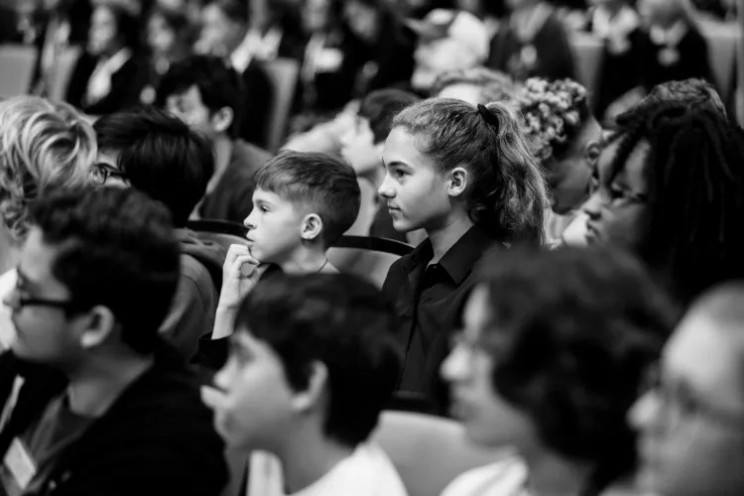
It’s also an opportunity to learn from the past and use these lessons to build a brighter future. Our species is facing an existential crisis in the form of climate change, where the collective impact of human civilization is threatening ecological collapse. Similarly, there is the threat of nuclear war, which has not disappeared since the end of the Cold War.
These issues demonstrate how important it is – now more than ever – that human beings come together to find solutions for living sustainably on Earth (and beyond it) and focus on the things that unite us, rather than divide us. In this respect, education, outreach, mentorship, and (yes) competition help students to learn these lessons early in life. Said Melear:
“It’s a good moment to take advantage of the better things of life. There are so many little beautiful moments, and I think, ‘OK, we’re helping these kids do it differently.’ Even though it is a competition, we want them to think of themselves as part of a movement.
“So when they ask to connect with another team to practice before they come into town, or if they need a mentor, we’re like, ‘absolutely!’ Not only do they come in and see all these different aspects that are going to be needed, but then they’re actually really excited for others winning. They can see, ‘we all worked really hard.”‘
Mentorship
As noted, one of the main goals of STEAMSPACE is to provide mentorship to students aspiring to be future astronauts, innovators, and space visionaries. To this end, their competitions are joined by scientists, science communicators, and industry specialists, who are featured speakers and/or guest judges in their competitions.
Among the luminaries are Morgan Irons (DSE), Janet Ivey-Duensing (host of Janet’s Planet), Ball Aerospace Project Manager Jeff Smith, Tapaswini Sharma (Analog Astronaut and Space Court Foundation research intern), Enterprise in Space founder Shawn Case, and NASA engineer Rachel Tillman – founder and curator of the Viking Mars Missions Education & Preservation Project.
As Irons shared with Interesting Engineering via email, her experience with STEAMSPACE has been invaluable:
“I have volunteered with the STEAMSPACE Academy organization over a couple of years. I was a speaker at two of their Cities in Space Conferences. This year, I was invited to be a judge for their CiS Micro Challenge for young Pioneers and the Footprint Challenge. I have loved sharing my journey, insights, and knowledge with the STEAMSPACE students. Their passion, drive, and out-of-the-box thinking are contagious and inspire me to ask new and different questions, to think of challenges and science in innovative ways.
“Being a speaker, judge, and mentor has allowed me to see all the good that the STEAMSPACE is doing in inspiring students, providing them with exposure to different career opportunities, and giving the students opportunities that may not be accessible to them on their own. I look forward to continuing my volunteer work with STEAMSPACE for years to come!”
Shawn Case expressed similar sentiments, noting the great work the organization does. “I highly support the work STEAMSPACE Education Outreach and Cities In Space are doing in STEAM education,” he said. “It is crucial we teach STEAM to create opportunities for students and to give them hands-on projects and experiences, exactly what STEAMSPACE and their work provide.”
Tapaswini Sharma, who is currently an undergraduate student at the Shri Vaishnav Institute of Management (SVIM) in Indore, India, also spoke highly of her experiences as a judge and mentor. “It was an incredible experience! I was truly amazed by the work all the students had put in creating their cities,” she said. “Each city displayed unique characteristics, whether it was a 3D model or a Minecraft city, and I was impressed!”
Janet Ivey-Duensing has 25 years of experience with children’s entertainment, education, and space advocacy. Her show, Janet’s Planet, has won 12 Regional Emmys and five Gracie Awards and airs on 140+ public television stations nationwide. As she shared with Interesting Engineering via Messenger:
“Most of us long for a legacy, some stake in the future that says, “I was here.” What better legacy than to be a part of shaping tomorrow’s leaders? For me, mentoring and partnering with STEAMSPACE means me saying yes to my friend and colleague Holly Melear in her company’s mission to create the next generation of space explorers. Mentoring keeps me in touch with the pulse of the younger generation and always gives me a greater understanding and perspective. And it is indeed a two-way street [from] which, I am sure, I benefit the most!”
Additional Efforts
In addition to its competitions and outreach, STEAMSPACE Academy is also known for its education and collaborative efforts. These include developing an international curriculum in the STEAM fields, hosting student conferences, leadership summits, promoting collaborations between businesses and academia, and promoting progressive education techniques.
The Academy also has a free monthly program known as Stellar Talks. These one-hour virtual events include Stellar Spotlight talks, where professionals in the space industry tell their stories and what they do to support space and living off-world. This is followed by a question and answer session. Students are able to access these interviews globally for their own research and preparation for Cities in Space and Micro-Challenges
In the near future, STEAMSPACE Academy plans to launch Student Spotlights, where today’s youth engage with viewers and let them know how they are working towards becoming space professionals as well as their experience competing in Cities in Space over their Middle School and High School careers. They also maintain a Resources section, which contains valuable reports and space habitation studies published by NASA and academia.
Throughout the school year, STEAMSPACE Academy also notifies its members about events and collaborative opportunities with other space and STEAM organizations. This is so the student community can remain up to date on what opportunities are out there for education, experimentation, and growth in the world of space and space settlement.

The world as we know it is faced with multiple crises, including war, pandemics, growing inequality, and dangerous misinformation. Climate Change and nuclear war also pose existential threats. It is therefore encouraging to see that for many, especially the younger generation, there is still hope for the future.
In addition to coming up with ideas for living off-world, STEAMSPACE Academy and its students promote sustainable living solutions for here on Earth. With the creation of closed-loop, bioregenerative systems and biomes inspired by life here on Earth, students can learn firsthand just how precious and interconnected life is in our Universe.
By fostering cooperation between students from all around the world, education institutions, and creating opportunities for public/private partnerships, they are helping to create a future where the next generation (to quote Melear) “can do it differently.”
In this respect, STEAMSPACE is not just creating the next generation of engineers, scientists, artists, and innovators. They are also helping to create the next generation of visionaries and change-makers.

